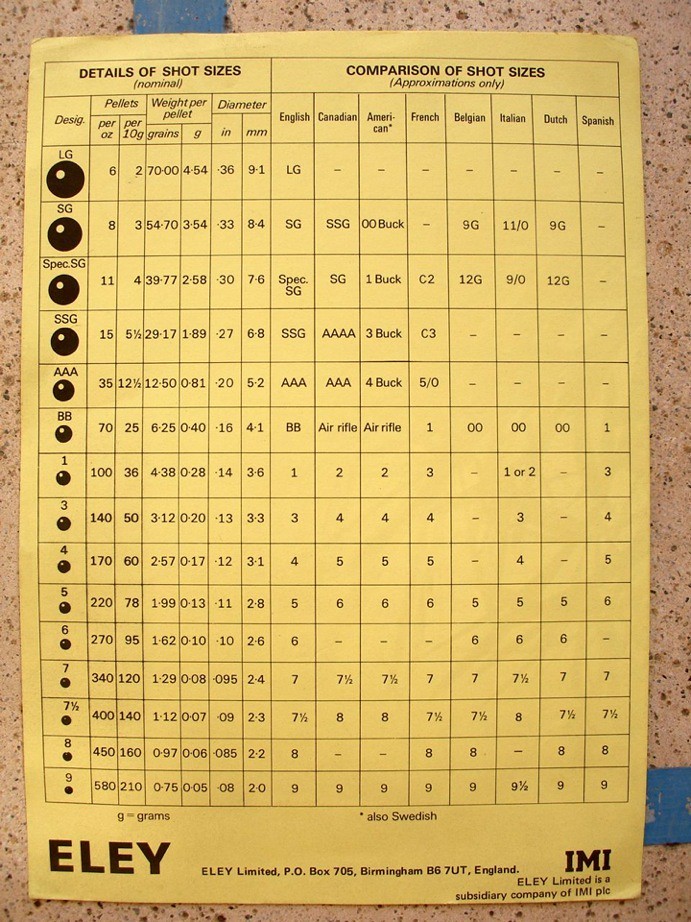paulvallandigham said:
For sizing bird shot, use the "Rule of 17". That is, subtract the # size of your shot, from 17 to get its diameter in hundredths of an inch. ex. #6 shot, subtracted from 17 = .11" diameter.
That's for U.S. shot sizes, Paul. There at least used to be a number of "national" shot size systems, which did not agree on the numbering. I don't know when the standardization was, but the U.S. manufacturers agreed on the current system based on even increments of pellet diameter. AIUI, the U.K. manufacturers traditionally used sizing based on pellets per ounce, with some differences between manufacturers. These shot sizes did not necessarily fall on an even increment of .010" or .005" diameter, so the different sizes did not necessarily exactly match U.S. ones, nor were there necessarily even corresponding sizes in use to the various U.S. ones. There was apparently a rationalization among the manufacturers, but the sizes still did not necessarily match the closest U.S. ones, nor were all possible sizes necessarily in use - #2 seems to be missing from many U.K. tables, for example - and they still did not necessarily have the same designation as the closest U.S. size. What prompted my question is that some equivalency tables, such as those by
Hallowell and
Griffin & Howe appear to be using the specifications for the corresponding U.S. shot sizes, and others like
this and
this don't match exactly. All of this prompted me to go do some more web-searching, and I came across this photo of a spec. sheet of unknown vintage from Ely, posted on a U.K. board:

which ties with the numbers Dave gave (Thanks, Dave), and where the pellet counts look traditional, but the sizes rounded off to the nearest .005". To further complicate things, there are metric shot sizes based on even increments of shot diameter, like the U.S., and what I've read on some U.K. sites suggests some manufacturers are using the closest traditional size designation for these even-increment metric shot sizes. All of this can make it difficult to figure out if, for example, the U.K. #6s someone recommends for pigeons is closer to a U.S. #7 or a #6.5, and this is why I asked.
Regards,
Joel







